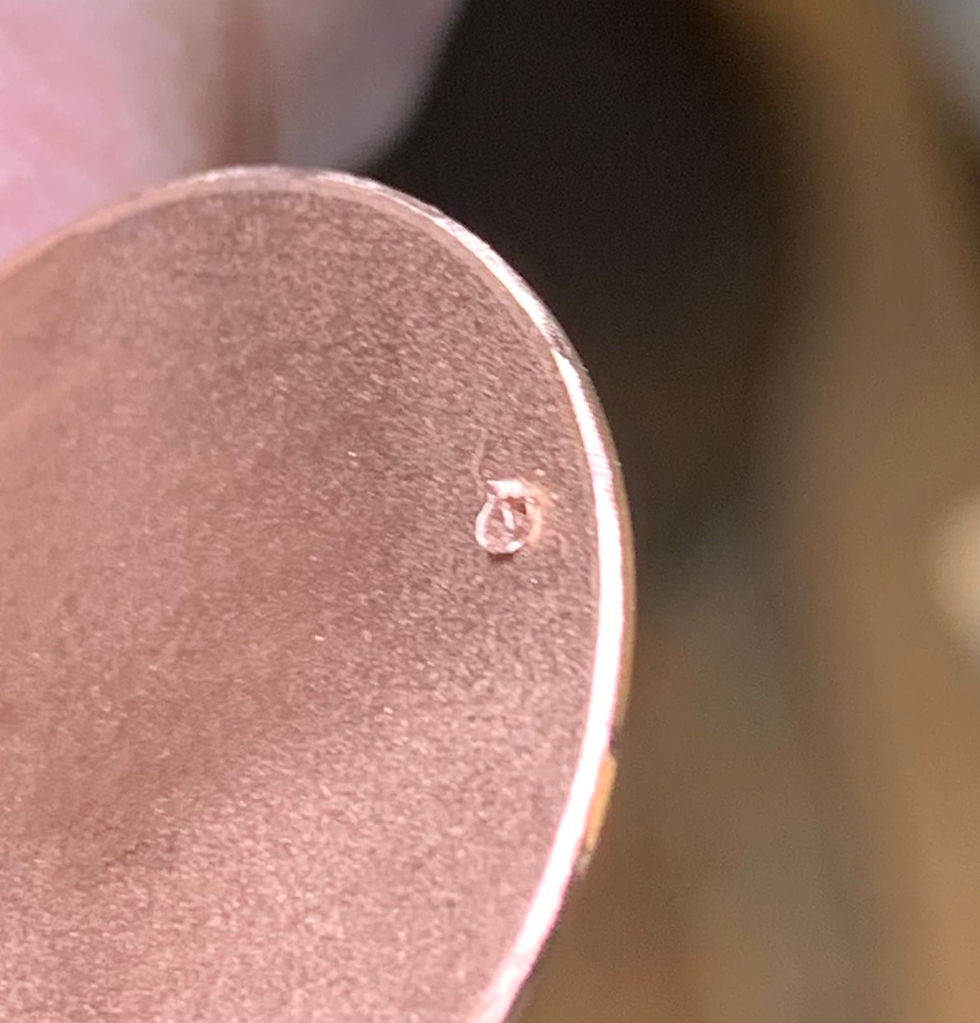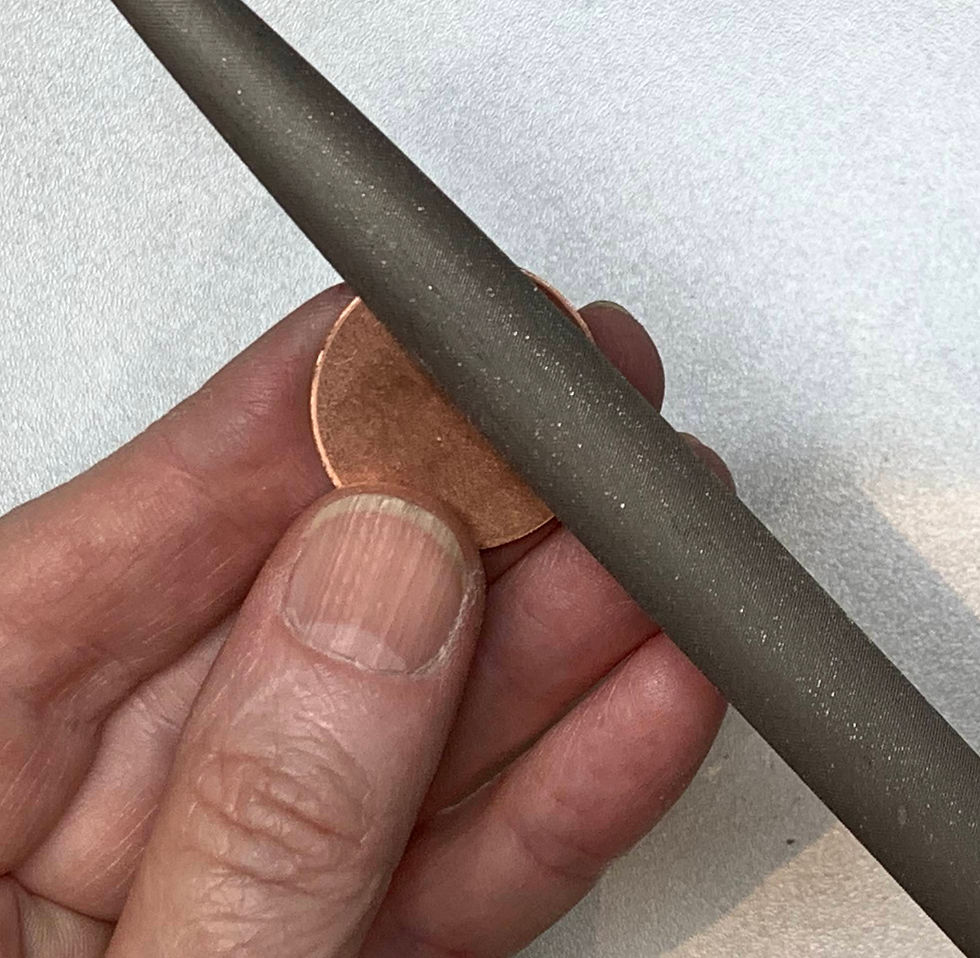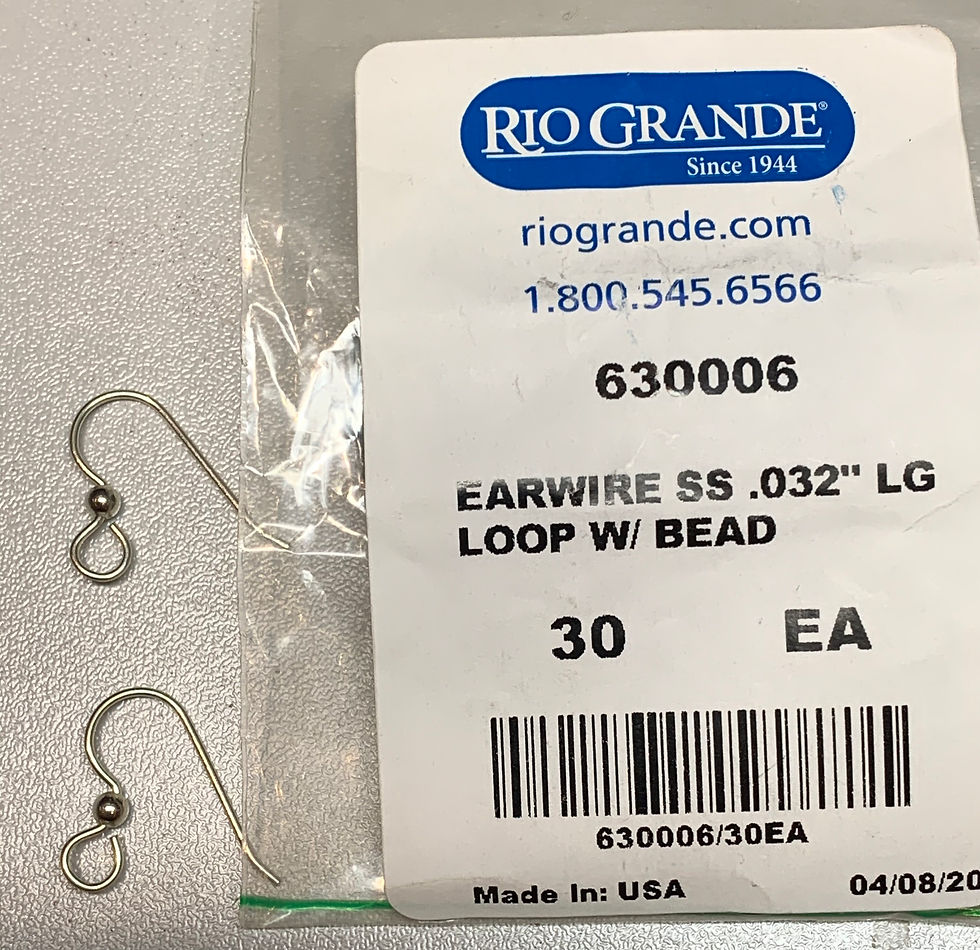Dragonflies in Tall Grass Earrings
- Metal Maven
- Nov 21, 2019
- 4 min read
Updated: Sep 18, 2021

Here is a tutorial with photos showing you how to create an easy set of Dragonflies in Tall Grass earrings. You use any of the Tall Grass Pressings to make these earrings.
Metal Maven Pressing used for this project.
Begin with one of Metal Maven's Tall Grass Pressings.
Mark Vignettes
This tutorial will show you how the pressing can be used to make 3 sets of round earrings. The photo below shows using a transparent circle template to mark out six 1-1/8" circles on your pressing. Metal Maven used a Staedtler transparent circle template found on Amazon, but you can also choose to use any shape you wish.

Below, Metal Maven lined up the template using a 1-1/8" circle and drew around an area on the pressing that captures the Dragonflies in the tall grass.

Metal Maven designed this pressing for different round sizes that will allow you to capture the essence of the Dragonflies in the Tall Grass for each size! In the photo below, you can see that 7/8", 1", and 1-1/8" will work the best. The photo shows the various vignettes based on the size of the circles. There are dragonfly images outside of the vignette areas that can also be used to cut out and create other components such as links and bails.
This same technique works with the other two Tall Grass pressings.

Cutting Vignettes
Once you have drawn your circles on the pressing, a vignette is defined. The vignettes can be cut out with a Jeweler's Saw, but the easiest method is to use a disc cutter if you have one. I use a Pepe 196.10 Disc Cutter. A newer model of this same disc cutter is available at Otto Frei, the Pepe 196.10A. Below is a photo of the disc cutter.

Using the Disc Cutter
Follow these steps when using a disc cutter:
1) Open your disc cutter wide enough to slide in your metal. On the opposite side of the disc cutter, insert a scrap piece of metal that is the same gauge as your pressing. This is necessary to keep your disc cutter level when cutting. See the above photo.
2) Then turn your disc cutter upside down and slide your metal pressing in and center the vignette being careful to not mar the pressed design. The reason for turning it upside down to insert your metal is to protect the pressed design from being marred by the disc cutter punch. Once you get your vignette centered in the hole, tighten the disc cutter. Be careful not to over tighten.
3) Flip the disc cutter back over and insert the punch. See the photo below. Notice the back of the pressing is visible.

4) Use a hammer, mallet, or hydraulic press to force the punch through the disc cutter.
For this tutorial, Metal Maven used a hydraulic press.
When using a hydraulic press, only use enough force to cut through the metal. You do not want to mash your vignette or ruin your disc cutter punch. Most of the time you will hear a popping sound when the disc has cut through the metal. That's your clue to stop pressing.
Take the disc cutter out of the press and use a nylon hammer or rawhide mallet to hammer the punch the rest of the way through the disc cutter. Don't let the punch hit the floor or counter top. To protect the punch, Metal Maven always holds the disc cutter over a padded surface so the punch does not hit the floor or counter. You don't want to damage the cutting edge of the punch.

Marking and Drilling a Hole
Once you have removed your vignette from the disc cutter its time to mark where you want to drill you hole. Use a fine tip Sharpie to mark where the hole will go.

Here's a tip to keep your drill bit from ruining your piece. Use a pointed awl to put a dimple in the center of your mark.

Lightly tap the end of the awl with a brass hammer to form a dimple. This step is to form a tiny impression so that your drill bit will stay centered and not dance around on the surface of your metal resulting in unwanted scratches.

Line up your drill bit on the dimple and drill a hole. You can also use a flex shaft to drill. To keep the piece from moving when drilling, hold it down with your thumb or fingers.

De-burring the Hole
After drilling, there will likely be some burrs on both front and back of your piece. In the photos below you can see a large burr on the front and a small burr on the back.


A handy way to easily remove the burrs is to use a round bur bit that is sightly larger than your hole. Hold the burr bit with your fingers and put the head of the bit against the hole and twist. Keep twisting until all of the burr is removed. This technique will leave a smooth edge around your hole. See photo below.

Filing the Edges
Use a file to smooth the edges of the back side of your piece. The front edges should already be smooth from going through the disc cutter. Use the flat side of a #5 half-round half-flat file. See photo below.

Finishing Your Piece
Tumble in a rotary tumbler with steel shot or polish on a buffer.
Adding the Earwires
Metal Maven recommends using Sterling Silver earwires from Rio Grande. They are relatively inexpensive and allow you to market your earrings as being good quality as opposed to base metal earwires. Here are the earwires used for these earrings.

Opening the earwires.
A good technique for attaching the earwire loop to your piece involves opening the loop to the side instead of pulling it out from the ball. Grab a pair of chain nose pliers and hold the open end of the loop. See the photo below.

Now hold the earwire with your fingers and pull the open loop towards you. The loop will look like the photo below if you have done it correctly. Next, put the open loop through the hole at the top of your piece. Using the pliers again, bend the open loop back into place. Be sure to face the front of the earring to front side of the earwire. (Metal Maven's husband has been known to get this backwards!)

The Finished Piece
Here is the final product.
















Comments